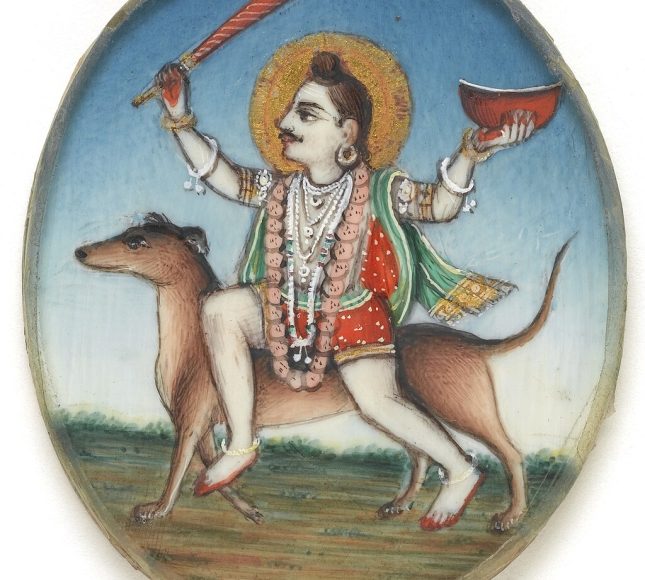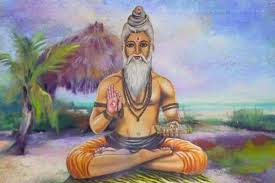BHAIRAU (BHAIRAVA) He runs towards Bhairau, Bhuta and Sitala and gets as ass rolling in dust to ride upon. (Gond Namdev, p. 874) Bhairau or Bhairava is another name of Shiva in its terrible aspect. The wife of Shiva in this terrible aspect is called Bhairavi. Bhairava is an inferior manifestation of some portion of Shiva. He has the head of a dog. There are eight Bhairavas named Asitanga (black-limbed), Sanhara (destruction), Ruru (a dog), Kala (black), Krodha (anger), Tamra-chuda (red-crested), Chandra-chuda (moon-crested) and Maha (great). All these forms are indicative of something frightening.
References :
1. Kohli,Surindar Singh ed, Dictionary of Mythological References in Guru Granth Sahib, 1993
Bhairava, also known as Kala Bhairava, is a fierce and powerful manifestation of Lord Shiva in Hindu mythology. He is revered as the protector of sacred spaces, the destroyer of ignorance, and the enforcer of dharma (righteousness). Here are some key aspects of Bhairava:
Origins
Bhairava’s origin is linked to a mythological tale in the Shiva Purana. When Lord Brahma and Lord Vishnu were debating their supremacy, Shiva manifested as a pillar of light to settle the dispute. Brahma, in his arrogance, falsely claimed victory, leading Shiva to create Bhairava from his third eye to punish Brahma for his dishonesty. Bhairava decapitated Brahma’s fifth head, symbolizing the destruction of ego and falsehood.
Symbolism
Bhairava represents the terrifying yet protective aspect of Shiva. His name is derived from the Sanskrit words bhaya (fear) and rava (sound), meaning “the one whose roar removes fear.”
He is often depicted with a fearsome appearance, holding a trident (trishula), a drum (damaru), and a skull (kapala), symbolizing his control over time, sound, and the cycle of life and death.
His mount is a dog, which symbolizes loyalty and vigilance.
Role in Hinduism
Bhairava is worshipped as the guardian of sacred spaces (Kshetrapala), ensuring their purity and sanctity.
He is associated with time (Kala), emphasizing the transient nature of life and the importance of spiritual discipline.
Devotees seek his blessings for protection, courage, and liberation from fear and ignorance.
Festivals and Worship
Bhairava is honored during Bhairava Ashtami, a festival commemorating his creation. Devotees perform rituals, chant mantras, and offer items like red flowers, alcohol, and meat to invoke his blessings.
Temples dedicated to Bhairava are found across India, particularly in Varanasi (Kashi), where he is regarded as the city’s guardian deity.
Bhairava’s fierce yet compassionate nature inspires devotees to confront their fears, overcome obstacles, and embrace spiritual growth. Would you like to explore his role in specific rituals or his connection to other deities?





